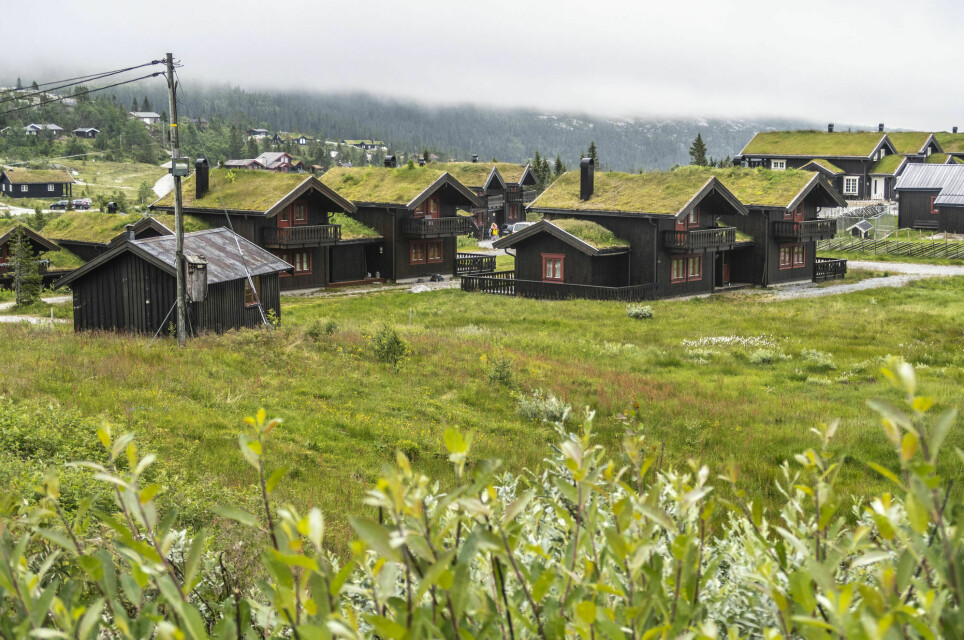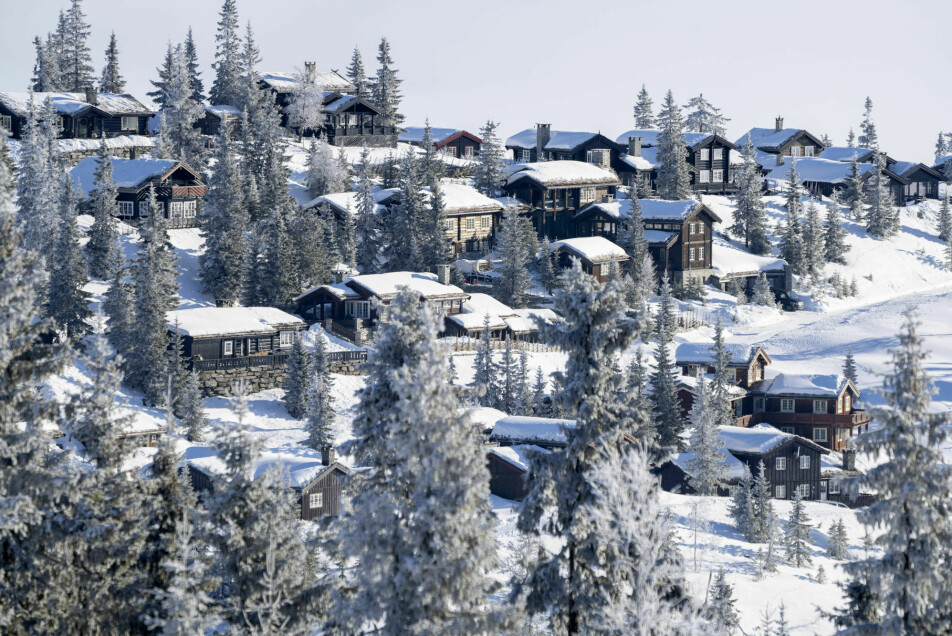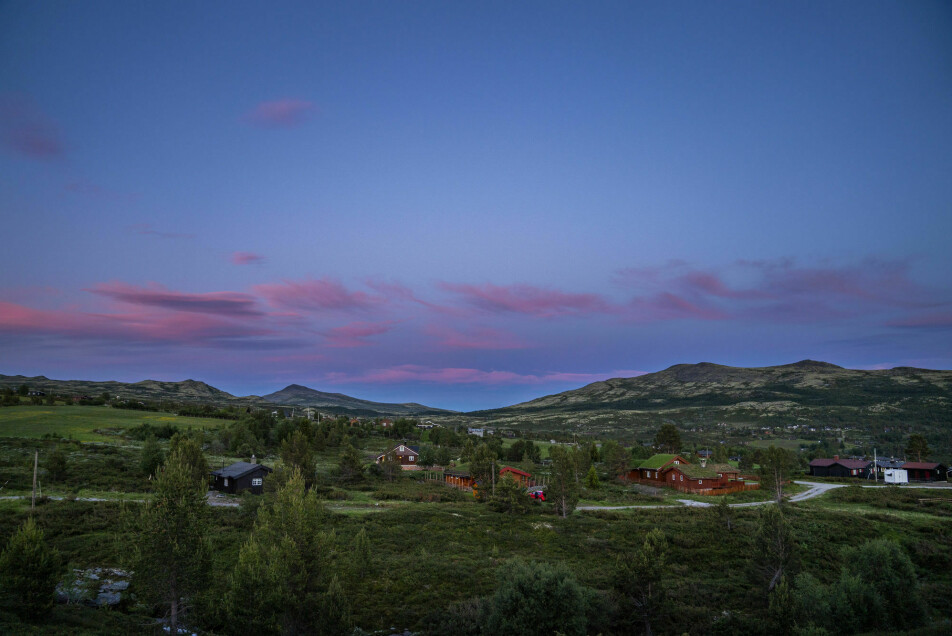
Norwegians have built a half-million cabins as holiday homes. Is that too many?
There’s roughly one cabin for every tenth Norwegian, and more will be built.
Norwegians love their cabins. There are about half-million of them scattered around Norway, hugging the mountains and coastlines.
Once these cabins were modest mountain or seacoast huts, primitive dwellings used as summer farms. Now they have become increasingly sophisticated, with top-quality appliances, two-car garages, and sometimes heated driveways for easy winter access and more.
Vinje municipality in south central Norway is the country's fourth largest second-home community. The Norwegian Broadcasting Corporation, NRK, has reported that locals are in an uproar over more proposed second-home development.
The potential construction of 1300 new cabins in the municipality has caused the local population to mobilize, NRK says. The municipality is already home to 5,500 cabins – but only has about 3,700 year-round residents.
The cabins don’t only take big bites out of nature. They have also become part of the larger discussion about climate change.
“From an environmental and climate perspective, and as a researcher who is concerned with sustainable development, I would argue that we should not allow the continued construction of cabins,” said Jin Xue in an email to sciencenorway.no. Xue is a researcher and associate professor at the Department of Urban and Regional Planning, Norwegian University of Life Sciences (NMBU) who has studied “the hidden side of the Norwegian cabin fairytale”.
She says Norwegian cabin life is very luxurious.
“That a large proportion of the population has access to several homes represents a very high standard of living. We would need more planets if everyone on Earth lived like Norwegians,” she said.
Can have major financial benefits
She nevertheless points out that it’s important to weigh different global, national, and local interests and considerations to say whether or not Norway should clamp down on new cabin construction.
For many municipalities, the financial benefits are great, she says. That’s the case in Vinje.
In 2016, Menon Economics prepared a report on behalf of Vinje municipality. They concluded that the tourism industry in Vinje created as much as NOK 255 million in value. Tourism and cabins also provided 410 jobs in the municipality, which is 23 per cent of total employment.


Restriction — an ethical argument
“There is an ecological limit, and people who consume the most should reduce their consumption to allow for people who do not have enough. This is an ethical argument,” she said.
It’s also urgent that we cut greenhouse gas emissions, as described in the UN's latest climate report, she points out.
“The construction of new cabins leads to more emissions, both from the actual construction and from changes in land use. Last but not least, we find ourselves in an environmental crisis in the same way as we are in a climate crisis. The development of cabins and infrastructure such as roads, electricity and water supply degrades and threatens nature and can lead to a loss of biological diversity, for example,” she said.
A little less so everything will be fine?
The average Norwegian cabin was 96 m2 in 2018. In comparison, the average Norwegian home is 120 m2, according to an article in Nettavisen (in Norwegian) earlier this year, based on figures from Norwegian Social Research, NOVA, at Oslo Metropolitan University.
In 2020, the Western Norway Research Institute (Vestlandsforskning) published a report on the climate effect of building small cabins instead of large ones. They compared the average Norwegian cabin with two smaller cabins from an architectural firm, Stiv Kuling. The largest of these smaller cabins was 66 m2, the smallest was 29.
The figures from Vestlandsforskning show that building the smallest cabin would reduce greenhouse gas emissions by 65 per cent compared with the average cabin. A medium-sized cabin would account for a reduction of 32.5 per cent during the cabin's lifetime, which they estimated to be 60 years.
They also reported that the greatest savings potential in terms of greenhouse gas emissions is in the choice of material when the cabin is built.
Emissions per bed?
The smallest cabin provided the largest CO2 savings. But this does not necessarily provide the whole picture, the researchers write in the report.
Because while smallest cabin requires the least materials, it also has the fewest beds. Measured per square metre, a cabin of 66 square metres comes out best.
They point out that the number of beds could be a better measure than emissions per square metre. Maybe every single cabin needs to be more intensely used in the future? Might Norwegians have to share existing cabins?
Car sharing is a thing — could cabin sharing work too?
Vestlandsforskning addressed this in another report.
Cabin sharing through services such as the classified ad website Finn.no and Airbnb is not completely unknown today. But the researchers wrote that cabins could possibly be shared in other ways in the future.
These options include:
· Profit-based rentals from private person to private person
· Non-profit cabin sharing where private individuals rent cabins or beds to other private individuals
· Profit-based cabin sharing where private individuals get access to cabins via membership on a sharing platform
· Non-profit cabin sharing where private individuals who are not in the same family share ownership of one or more cabins
Car sharing has become popular in big cities like Oslo. Could Norwegians share holiday homes in the future as well?
Jin Xue doesn’t discount that possibility.
“I think that cabin sharing is a potential solution to avoid building new ones. Maybe Norway needs a change in culture so that cabin owners feel like sharing with others,” she said.
She also believes that more systemic changes are needed to facilitate this. In August, sciencenorway.no spoke with SIFO researcher Torvald Tangeland about what it will take for society and each individual to live a more climate-friendly life.
He said that politicians have to drive the biggest changes.
A sharing economy was also part of one of three strategies he described to alter Norwegian consumption patterns.
Not automatically just a good thing to share
But is cabin sharing good for the climate?
“It’s not just how many and how cabins are built that affects the environment. How people use existing cabins is also important. For example, how often and how far people travel to get to the cabin, what they do in the cabin area and what means of transport they use,” Xue says.
“If cabin sharing leads to more people going on a cabin trip, the question is: is it good or bad for the environment? This is a question that should be investigated empirically. The answer depends in part on whether increasing cabin use replaces environmentally negative, long-distance holidays,” she said.

No need for a double garage
If Norwegians are allowed to build their sanctuaries in the mountains in the decades to come, what will it take to build cabins in the least damaging way as possible?
“Any newly built cabins should be smaller, which will lead to lower energy consumption both in the construction phase and in use,” Xue said.
But that doesn’t mean everyone will have to have an outhouse, she said.
“I don’t think we have to return to the outdoor toilet, but newly built cabins should be built to a lower standard, in the sense that they don’t need to have a double garage or a kitchen full of modern appliances,” she said.
Similar to what Vestlandsforskning concluded in its report, she thinks that new cabins should be built more densely. That means they will take up less land.
“We should use space in a more efficient way. We should be building closer together to reduce the encroachment on nature and to make it possible to offer public transport between the cabin area and the city, and between the cabins and other destinations,” she said.
“All in all, a green growth strategy should be used in cabin development, to streamline energy and land use when it comes to cabin use and travel,” she said.
Can Norwegian cabin culture be changed?
Finally, we asked Xue if she thinks there is reason to believe that Norwegians will be able to change the way they build their cabins.
“I believe that cabin development will be slowed down and done differently,” she said.
Her experience is that there has been more public debate over cabins in recent years, and that politicians and other people are becoming more aware of the challenges these second homes pose.
The Ministry of Local Government and Modernisation is in the process of revising guidelines for cabin planning. The ministry will discuss the climate effect of the cabins related to development and transport, she says, with an eye to the national Climate Plan 2021-2030.
The new guidelines will give greater weight to issues related to nature, climate, and the environment, she said.
Positive signals
There are also communities where residents oppose proposed cabin development.
A number of municipalities and county municipalities want or have tried to enact stricter regulations on cabin construction, she says.
She herself will lead a project under the auspices of NMBU and other partners, funded by the Research Council of Norway.
Together with selected municipalities and county municipalities, they will study the planning of sustainable cabins. The project will be launched this autumn.
“I think these are positive signals about a change in the way cabins will be built in the future,” she said.
Translated by Nancy Bazilchuk
Read the Norwegian version of this article on forskning.no
References:
Solbraa, Torkjel. (2020). Hyttedeling — hvorfor eie, når vi kan dele? (Cabin sharing: Why own, when we can share?) Report from the Western Norway Research Institute (Vestlandsforskning).
Walnum, Hans Jakob. (2020). Klimavurdering av å bygge mindre hytter -en vurdering av ulike materialvalg, design og bruksfasen av hytta.
(Climate assessment of building smaller cabins - an assessment of different material choices, design and use phase of the cabin.) Report from the Western Norway Research Institute (Vestlandsforsking).






























